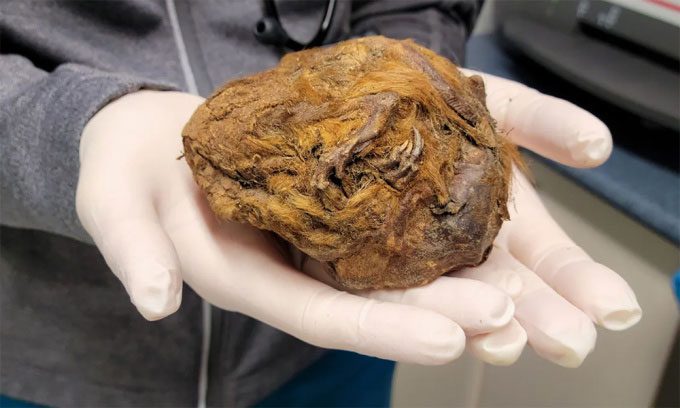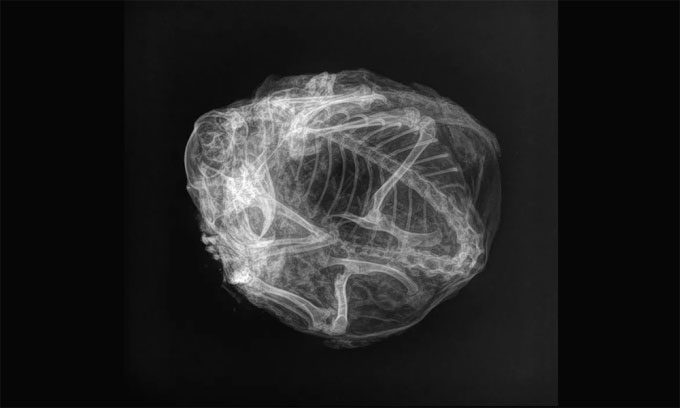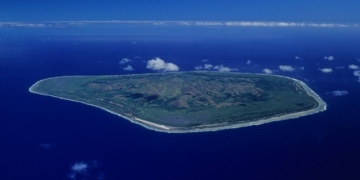The Arctic Ground Squirrel Likely Died from Being Buried in Snow During Hibernation in the Ice Age, Becoming a Frozen Mummy for Thousands of Years.

Frozen mummy of the Arctic ground squirrel from the Ice Age. (Photo: Yukon Beringia Interpretive Centre).
The Yukon Beringia Interpretive Centre shared photos of a strange “fur ball” on social media on March 28. This is actually a 30,000-year-old Arctic ground squirrel mummy, remarkably well-preserved to the extent that its fur and tiny claws can be seen. Experts discovered this impressive mummy in the frigid Yukon region of Canada.
With the assistance of the Alpine Veterinary Medical Centre, the squirrel underwent X-ray imaging, revealing an astonishingly intact skeleton despite being curled up. The research team further indicated that the specimen will soon be displayed at the Beringia Centre for public viewing.
“You can’t recognize the squirrel until you see the tiny hands, the claws, then a little tail and ears. I study bones full-time, and they are very interesting and well-organized. But when you see a perfectly preserved animal that’s 30,000 years old, still showing its face, skin, fur, and everything, that’s truly impressive,” said Grant Zazula, a paleontologist at Yukon.

X-ray image showing the squirrel curled up, possibly for hibernation. (Photo: Yukon Beringia Interpretive Centre).
Despite being 30,000 years old, the squirrel remains in excellent condition due to being trapped in permafrost, with tissues preserved as if placed in a prehistoric refrigerator. Its curled posture indicates that the animal died while hibernating. It is likely that it intended to hibernate in a burrow but was buried under snow and perished.
Yukon holds numerous frozen prehistoric animal specimens from the Ice Age. Last year, miners in Tr’ondëk Hwëch’in, Yukon, unearthed a baby woolly mammoth in such good condition that most of its fur and skin were still intact. In 2020, a 57,000-year-old wolf pup was also excavated from this region, retaining even soft tissues and teeth as if it were growling.
This area was home to many Ice Age species, from wild horses and woolly mammoths to Beringian lions and giant short-faced bears. Thanks to the “collection” of frozen animals unearthed, experts can gain a better understanding of the unique ancient ecosystem.


















































